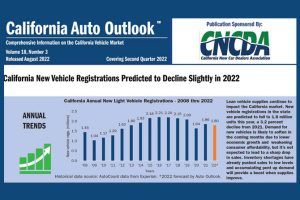You’ve probably noticed it’s harder to find qualified people to hire lately. The Macrotrends website says the U.S. population in 2022 is slightly less than 385 million people. The 2020 census found that more than 55 million people (about 14%) had retired. The labor force participation rate was 62.2% in April 2022, and the unemployment rate was 3.6%. There were already job shortages before the pandemic, but the pandemic worsened it. However, even though many people chose to retire during the pandemic, about 1.5 million came back into the workforce later.]
Any sentence with the word “millions” sounds like shortages should not be a problem, but everything is relative. March 29, 2022, Jeff Cox at CNBC reported five million more jobs open than workers to fill them. That is, employers with 18 jobs have to compete for 10 people.
Employers can no longer afford to hire only men when they need to fill jobs. The U.S. is approximately half male and half female, but there are slightly more women than men. To take the statistic above and recast it slightly, suppose you have 18 jobs and 10 job candidates, but five are women. If you default to hiring a man, those five men will compete for 18 jobs, and it’s no wonder you can’t find enough people to hire.
Hiring women starts with recruiting them. That can be challenging because many women don’t consider working at a dealership, and the turnover rate (according to CDK research) is 88%. But women make or influence the decision to buy a vehicle most of the time. Many people in the industry think women are more likely to buy vehicles from other women, so companies that ignore women are losing out on a great sales opportunity. Bottom line: women dealer employees can lead to more sales.
Many companies in the auto industry have gotten the message. At CNCDA, 75% of our staff are women. Additionally, our Board of Directors includes the incredible talents of Hilary Haron (Haron Jaguar Land Rover Volvo), Cheryl Bedford (Sunset Auto Center), and Anne Boland (Bob Smith BMW). And our NextGen group is spearheaded by Hilary Haron and Ellena Sweet (Fresno Acura). We appreciate the perspective, leadership and value they bring to our organization.
General Motors’ board is one of the most gender-diverse boards in the country. The CEO is Mary Barra, and 58% of the board members are women. Most of the committee chairs are women, too.
Other industry CEOs include:
- Liza Borches (Carter Myers Automotive)
- Mary Buchzeiger (Lucerne International)
- Flavia De Veny (Camaco-Amvian)
- Corina Diehl (Diehl Automotive Group)
- Aicha Evans (Zoox)
- Gail Faulkner (Faulkner Auto Group)
- Julia Fream (Original Equipment Suppliers Association)
- Linda Hasenfranz (Linamar Corp.)
- Jennifer Johnson (Kendrick Plastics)
- Abigail Kampmann (Principle Auto)
- Lisa Lunsford (GS3 Global)
- Claudia Marquez (Hyundai Motor Mexico)
- Sejal Pietrzak (DealerSocket)
- Kimberly Rodriguez (Dura Automotive Services)
- Rosa Santana (Forma Automotive)
- Anuja Sonalker (STEER Tech)
- Sandy Stojkovski (Vitesco Technologies North America)
- Chrissy Taylor (Enterprise Holdings).1
That’s a long list, and maybe you haven’t heard of every company listed after these names, but it’s encouraging so many women are CEOs as long as you don’t think about the number of men who are CEOs. Still, it’s progress.
How do you encourage women to apply for work at your dealership? Think about what you can do to encourage women to take classes to help them get dealership jobs. Reach out to local schools and teachers at those schools. In addition to public and private schools, talk to people at universities and community colleges. Attend career fairs and support organizations that encourage all students to gain valuable trade skills. Consider awarding scholarships and offering apprenticeships. Even a relatively modest scholarship can still help students pay for their training.
Most people will visit the website before they visit the dealership. Make sure yours sends the right message. For example, look at your dealership website and post pictures of a diverse workforce you want to encourage. People notice inclusive content; have prominent pictures of female employees on the website.
Hiring women to work at your dealership is a good idea, but listening to them once hired is just as important. You want to create a collaborative and supportive work environment for all employees. Talk to them about the demands on their time, personal and professional. Would job sharing, flexible hours, or work-at-home options help? Offer everything you can that is situationally appropriate. If your DMS system requires a VPN, switch to a cloud-native solution so employees can log in from home.
Promotions and pay raises encourage employees to stay with their companies. They are helpful, but make sure you don’t reward one gender and exclude the other. Given gender biases of the past, it can be easy to favor men over women unconsciously regardless of performance. Are women doing work that benefits the company but isn’t included in their job description? It’s important to identify and reward high-performing employees and provide mentorship, training and opportunities for career growth for every employee, regardless of gender.
In an article by Bonnie Marcus that appeared on the Forbes website Oct. 13, 2021, she noted women had been encouraged to speak up about workplace injustices ever since the #MeToo movement, but sometimes no one takes action after listening to them. That’s a problem. People who get ignored tend to stop giving feedback, and when they have the chance to go somewhere else, they are likely to take it. The result is high employee turnover. Any company with high turnover, including dealerships, will not be as profitable as it could be.
The article noted that 75% of women are discriminated against in the workplace because of age and gender chose to do nothing. More than two-thirds (70%) didn’t think talking would help. About one-fourth didn’t trust the human resources department, and a little less than a fourth thought talking would cost them their job.
That leaves the 25% who did speak up. Some spoke with a manager, but 61% were dissatisfied with the result. Others spoke with HR; 71% thought that didn’t help either. When women feel ignored in the workplace, they may start thinking about exiting, or worse: filing lawsuits. Wouldn’t it be better to listen and take action to make them feel valued?
What can you do at your dealership to change the dynamic? First of all, work toward making sure men do not outnumber women. According to David Mielach on the Business News Daily website on Dec. 1, 2021, women are 75% less likely to speak than men when they are in a minority. Groups without women reached different decisions than groups with women. The situation worsens when decisions are made by the majority instead of requiring a unanimous vote. They might not take as much time to speak and may not feel as powerful. Interestingly, asking for votes to be unanimous made it more likely for women to speak up because the group needed their vote to succeed.
When women speak up, it’s important to hear what they have to say and assess how you can incorporate and respond to their suggestions. They have a different perspective than men, and hearing it will make your business more well-rounded and better connected with your customer base.
Listening to the perspective of female employees will help you retain them as employees and help your dealership be more informed and able to communicate more effectively. Half your customers are women. Half your employees should be, too. But more than that, make sure they feel valued, respected, listened to, and part of the team. If that isn’t already the case at your dealership, you’ve got a great goal to work toward.
1To see a full list of 100 leading women in the North American Auto Industry, visit https://www.autonews.com/awards/100-leading-women-north-american-auto-industry.






